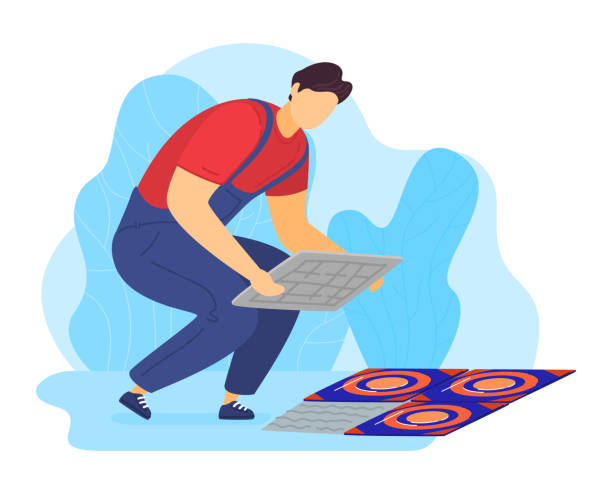Woodworking, an age-old craft with deep roots in tradition, is experiencing a renaissance. Modern woodcraft isn’t about rejecting the past; it’s about embracing new designs, technologies, and sustainable practices to push the boundaries of what’s possible with wood.

This journey in modern woodcraft takes inspiration from various sources. The clean lines and functionality of Bauhaus design principles are finding beautiful expression in furniture that seamlessly integrates into modern living spaces. At the same time, there’s a renewed appreciation for classic materials. Imagine a sleek, modern desk crafted from the rich, organic beauty of burlwood – a marriage of cutting-edge design and timeless material.
But modern woodcraft isn’t confined to workshops. Architects and designers are increasingly incorporating wood into their creations, blurring the lines between structure and art. Sustainable practices are also at the forefront, with woodworkers employing eco-friendly techniques and utilizing reclaimed wood to create stunning pieces.
The innovation in modern woodcraft extends beyond materials and aesthetics. New techniques and technologies are allowing woodworkers to achieve feats once thought impossible. CNC machines and digital design tools enable intricate joinery and complex curves, while advancements in adhesives and finishes ensure both strength and beauty.
This isn’t to say that traditional joinery methods like dovetails are a thing of the past. Modern woodcraft celebrates the fusion of the old and the new. Experienced woodworkers are incorporating these advancements while still revering the time-tested skills passed down through generations.
The use of wood in modern design extends beyond its physical form. Plywood, once relegated to utilitarian applications, is now finding itself transformed into stunning furniture pieces, showcasing the versatility of wood in the hands of a skilled craftsperson.
The minimalist movement has also had a profound impact. Modern woodcraft often emphasizes clean lines and clever design, creating pieces that are both functional and aesthetically pleasing.
Technology isn’t a replacement for the artistry; it’s a powerful tool that empowers woodworkers to bring their visions to life. 3D modeling software allows for meticulous planning and visualization, while CNC machines translate those designs into reality with incredible precision.
The rise of modern woodcraft artisans is another exciting aspect of this movement. These passionate individuals are carving a niche for themselves by creating unique and innovative pieces that reflect their personal style. They are the torchbearers, not only preserving the skills of the past but also pushing the boundaries of what’s possible.
The influence of modern woodcraft extends beyond workshops and galleries. It’s inspiring a new generation of creators, demonstrating that woodworking is not just a dusty craft but a dynamic and ever-evolving art form. So, whether you’re a seasoned woodworker or simply appreciate the beauty and functionality of wood in design, there’s something captivating about the journey of modern woodcraft. It’s a testament to the enduring power of human creativity and the endless possibilities that wood offers.
Examples of Modern Woodcraft:
- Sculptural Lighting: Modern woodcraft isn’t limited to furniture. Imagine a suspended lamp crafted from bent wood, its form mimicking the graceful curves of a bird in flight. This exemplifies the marriage of functionality and artistic expression.
- Geometric Wall Art: Wood panels arranged in a captivating geometric pattern can add a touch of modern elegance to any room. This showcases the ability of wood to be a beautiful and versatile medium for wall art.
- Multi-Functional Furniture: Modern living spaces often demand furniture that serves multiple purposes. Think of a coffee table that transforms into a dining table with a clever folding mechanism. This highlights the focus on functionality and space-saving design in modern woodcraft.
Getting Started with Modern Woodcraft:
- Online Resources: There’s a wealth of online resources available for aspiring modern woodworkers. YouTube channels and online courses offer tutorials on modern techniques, project ideas, and even tips on using design software specifically for woodworking.
- Local Workshops: Many woodworking schools and community centers offer workshops focused on modern techniques and design principles. This is a great way to learn hands-on from experienced instructors and connect with other enthusiasts.
- Embrace Experimentation: Don’t be afraid to experiment! Modern woodcraft is all about pushing boundaries. Start with a small project and use it as a platform to explore new techniques and materials.
The Future of Modern Woodcraft:
- Bio-fabrication: Bio-fabrication, the use of living organisms to create materials, holds immense potential for the future of woodcraft. Imagine furniture literally grown from sustainable sources!
- Smart Wood: Emerging technologies could see wood integrated with sensors and even electronics, creating furniture that interacts with its environment or provides additional functionalities.
- Accessibility and Education: As the popularity of modern woodcraft grows, making it more accessible through educational programs and affordable tools will be crucial. This will ensure that this exciting art form continues to thrive for generations to come.
Pingback: Why Woodworkers Prefer Hand Tools Over Power Tools? - woodyly
Hey people!!!!!
Good mood and good luck to everyone!!!!!